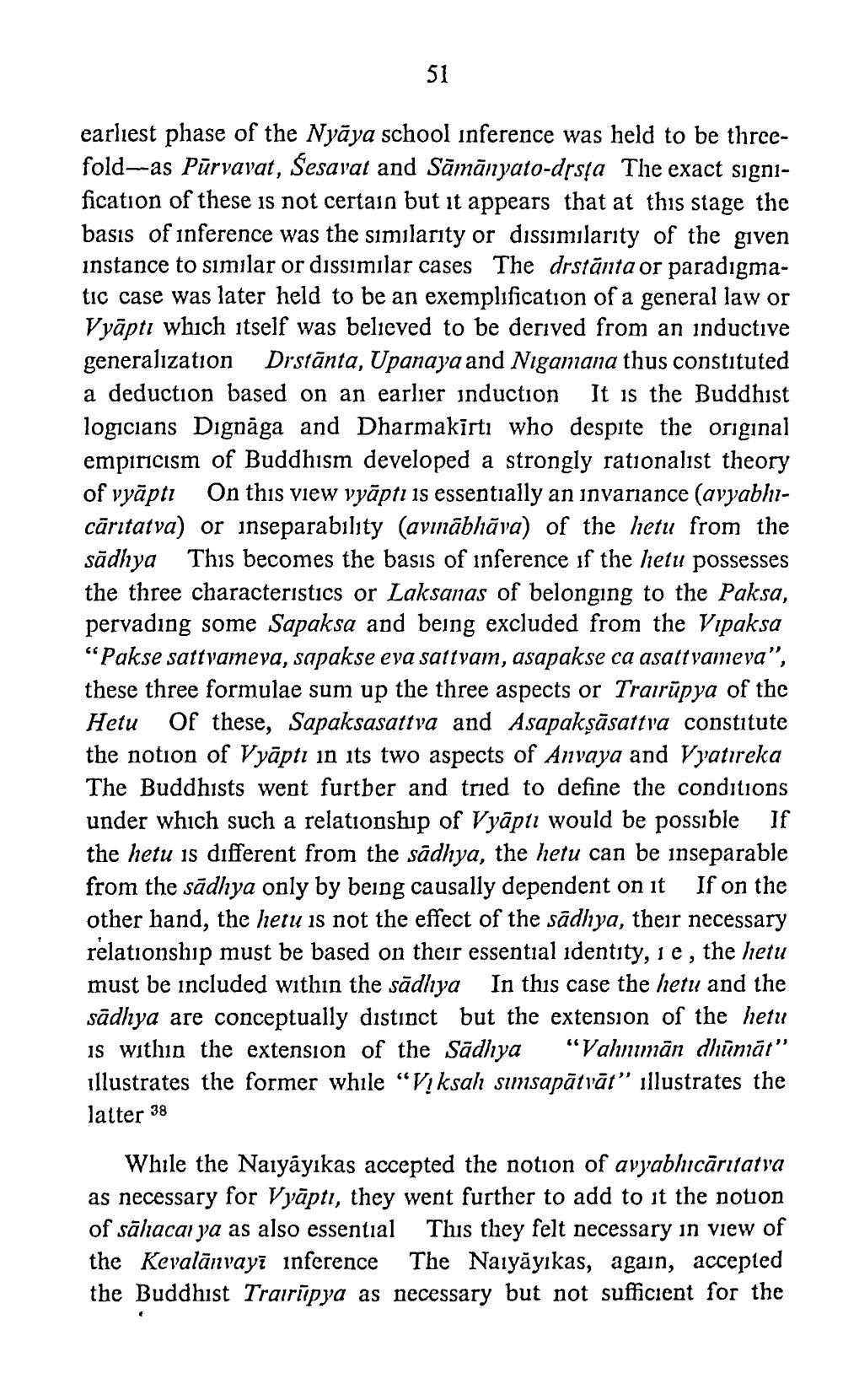________________
earliest phase of the Nyāya school inference was held to be threefold-as Pūrvavat, Sesavat and Sāmānyato-drsța The exact signification of these is not certain but it appears that at this stage the basis of inference was the similarity or dissimilarity of the given instance to similar or dissimilar cases The drstānta or paradigmatic case was later held to be an exemplification of a general law or Vyāpti which itself was believed to be derived from an inductive generalization Drstānta, Upanaya and Nigamana thus constituted a deduction based on an earlier induction It is the Buddhist logicians Dignāga and Dharmakīrti who despite the original empiricism of Buddhism developed a strongly rationalist theory of vyāptı On this view vyāpti is essentially an invariance (avyabhucāritatva) or inseparability (ayınābhāva) of the hetu from the sādhya This becomes the basis of inference if the hetu possesses the three characteristics or Laksanas of belonging to the Paksa, pervading some Sapaksa and being excluded from the Vipaksa “Pakse sattvameva, sapakse eva sattvam, asapakse ca asattyameva", these three formulae sum up the three aspects or Trairūpya of the Hetu Of these, Sapaksasattva and Asapakşāsattva constitute the notion of Vyāptı in its two aspects of Anvaya and Vyatıreka The Buddhists went furtber and tried to define the conditions under which such a relationship of Vyāpti would be possible if the hetu is different from the sādhya, the hetu can be inseparable from the sādhya only by being causally dependent on it If on the other hand, the hetu is not the effect of the sādhya, their necessary relationship must be based on their essential identity, i e, the hetu must be included within the sādhya In this case the hetu and the sādhya are conceptually distinct but the extension of the hetu is within the extension of the Sādhya “Vahnımān dhūnāt" illustrates the former while “Viksah simsapātrāt" illustrates the latter 38
While the Naiyáyıkas accepted the notion of avyablicăritatva as necessary for Vyāptı, they went further to add to it the notion of sāhacai ya as also essential This they felt necessary in view of the Keralānvayi inference The Naiyāyikas, again, accepted the Buddhist Trairūpya as necessary but not sufficient for the




